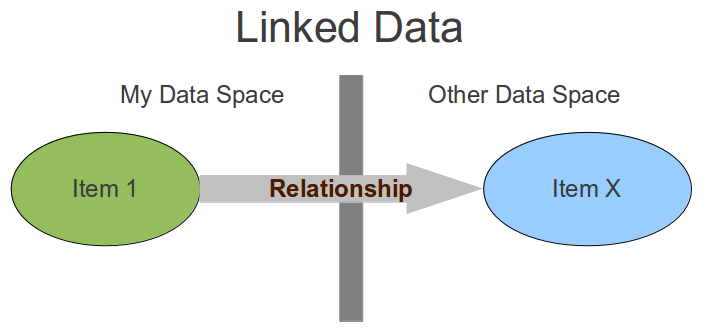Many moons ago I wrote a blog post detailing how RDF (one of the semantic web modelling frameworks) is format agnostic, in other words you can write RDF in various languages. These languages, or formats, may include XML (as “RDF/XML“), Turtle (as “RDF/TTL“), Notation 3 (as “RDF/N3“), RDFa (as “XHTML-RDFa“) and N-Triples (as “RDF/NT“) [1].
“Linked Data” (the modern Data Web concept) partly started life as an extension to the Semantic Web, basically increasing meaning to data in one space using outbound (and/or inbound) links to data in another space. But the important thing to grasp is that Linked Data is not format dependent, nor is it model dependent as some may believe! [2]
RDF does not have to be used to achieve “Linked Data”. RDF can obviously help in some cases, but in some cases when the data is either very simple or very domain-centric we don’t want to spend too much time trying to make our data fit into (or out of!) the RDF model. Linked Data could very easily be in some other format, such as CSV, JSON, RSS, Atom or even the Microsoft Collection XML format. Whatever data we are dealing with, we must carefully consider:
- What is the right model/framework for the knowledge?
- What is the right format for the data?
- How it fits in with the Linked Data in general?
- How to make it semantic/meaningful by using objective links and subjective lenses?
- How it is going to be used, and whether it needs to be automatically converted to other formats or frameworks (and by doing so, does it (and is it ok to) lose any data and/or semantics)?
It is very much a Knowledge Engineering task
Linked Data is as simple as:
- Please note that RDF/XML and Turtle are, presently, probably the most commonly used Semantic Web data formats.
- For instance Keith Alexander posted a wonderful post on how Linked Data fits in with everything else ( https://blogs.talis.com/platform-consulting/2010/11/11/a-picture-paints-a-dozen-triples/ ), unfortunately the post seems to highlight that RDF is the only way that Linked Data can be modelled - which as I’ve indicated in this blog post is not the case. Keiths blog post, however, is only one way (of many) of making Linked Data - and he does hint at some good ideas.
I hope that this blog post makes some kind of sense, as I believe Linked Data is one of the ways that we can progress the web in a good direction.
Daniel



View Comments to 'Linked Data is format and model agnostic'
3 May 2011
[...] Unfortunately this wasn’t enough, as XML does not provide a standardised way of describing things, and also does not provide a standardised way of describing things in a distributed fashion. Distributed description is incredibly useful, it allows things to stay up to date - and not only that - it is philosophically/ethically more sound as people/groups/businesses “keep” their own data objects. The Semantic Web provided the Resource Description Framework (RDF) to deal with this, and the Linked Data initiative extends this effort to its true potential by providing analogues in well-used situations, processes and tools. (For instance, see my previous blog post on how Linked Data is both format and model agnostic). [...]
Leave a comment